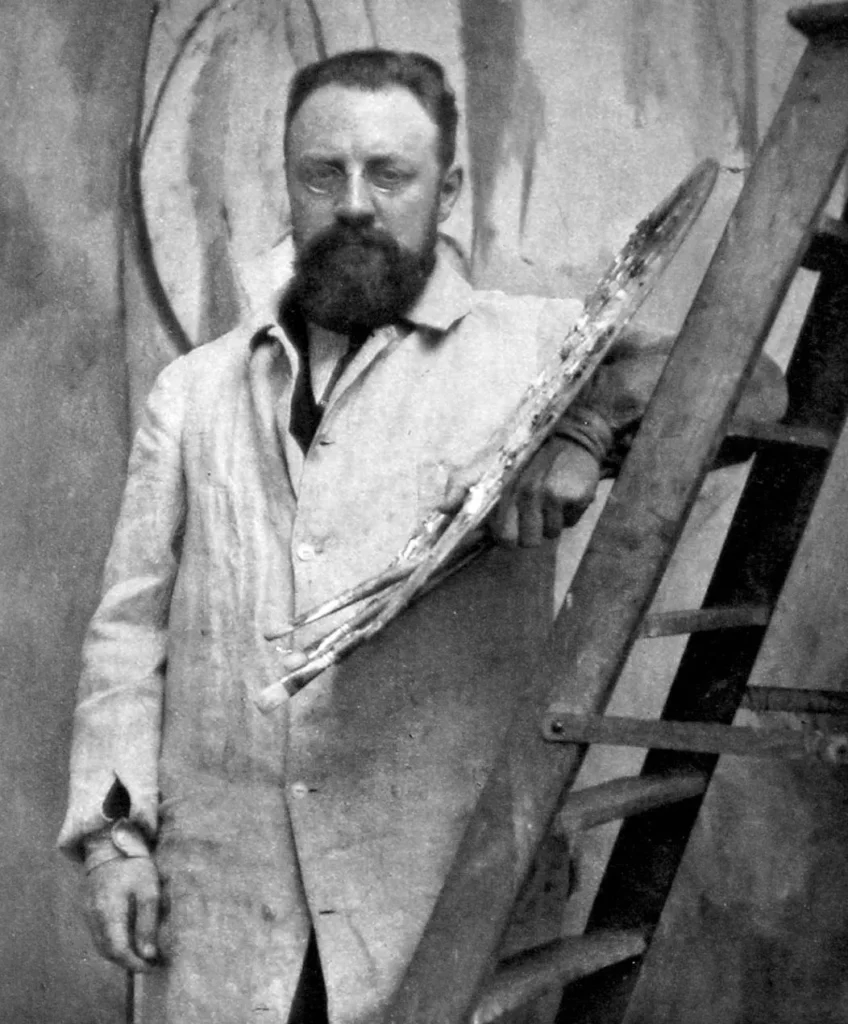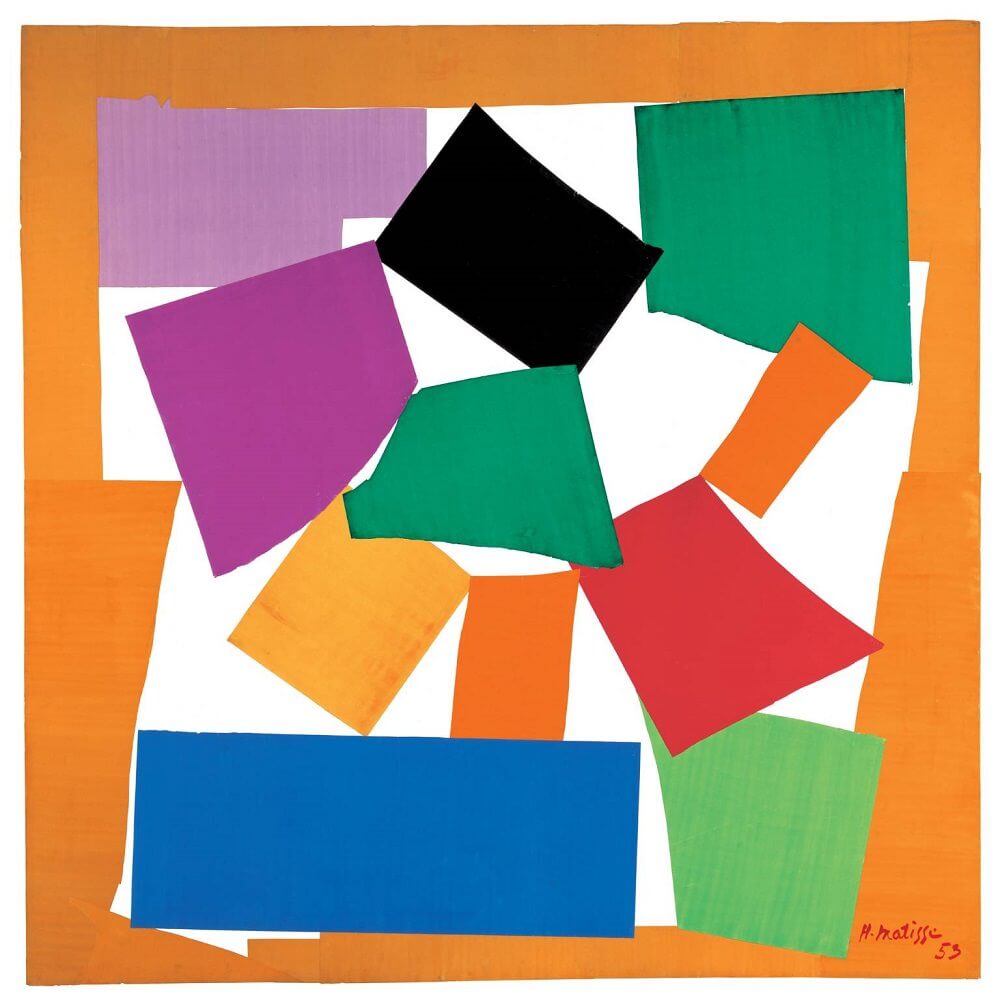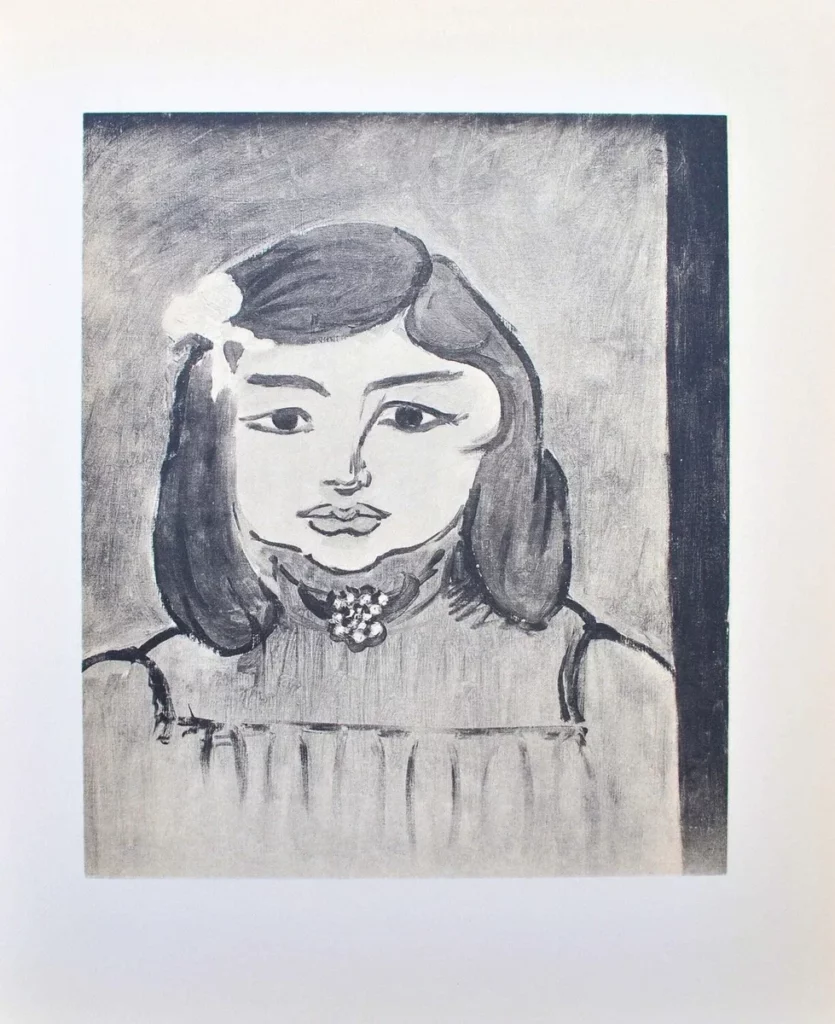Henri Matisse, a revolutionary figure in the world of art, left an indelible mark with his innovative and groundbreaking techniques. Among his many contributions, his series of Cut Outs stands out as a testament to his creativity and mastery. In this article, we will explore the life and career of Henri Matisse, delve into the fascinating world of Cut Outs, and provide detailed information about one of his most iconic works.
Who was Henri Matisse?

Alright, gather ’round, because we’re diving into the world of Henri Matisse – a guy who didn’t just paint; he created magic with colors. Born on December 31, 1869, in Le Cateau-Cambrésis, France, Matisse wasn’t your typical art prodigy. He started with the law before realizing that his true calling was the wild world of art. In addition, he created black-and-white illustrations for numerous books and more than a hundred original lithographs at the Mourlot Studios in Paris while working as a graphic artist.
FUN FACT: Did you know that Henri Matisse began painting only after his mother bought him an art kit while he was recovering from appendicitis? This seemingly small gesture sparked his passion for art.
His Unconventional Journey
So, imagine this: a young Matisse at the Académie Julian in Paris in 1891, rubbing shoulders with the art crowd. But he didn’t stop there; he hung out with Gustave Moreau at the École des Beaux-Arts, diving headfirst into the art scene. His early days were all about Impressionism, those dreamy, blurry paintings we all love. But guess what? Matisse wasn’t the one to stick to the norm. He rode the Fauvism wave, splashing bold colors and wild brushstrokes onto his canvases.
As the years rolled on, Matisse didn’t settle. He explored sculpture, printmaking, wall art – you name it. His career was a rollercoaster of styles, a quest to find the soul of form and color. And you know what? He nailed it.
The Cut-Outs Era: Turning Setbacks into Triumphs

Now, let’s zoom into the latter part of Matisse’s life. Health threw him a curveball, making it harder for him to navigate the art world. But instead of giving up, Matisse pulled out his secret weapon: cut-outs. And that’s where the real magic begins, with the masterpiece that is The Snail.
The Snail – Where Color Meets Canvas

| Artist | Henri Matisse |
| Date Painted | 1953 |
| Medium | Cut and pasted painted paper on canvas |
| Genre | Abstract Color Explosion |
| Period | 20th Century |
| Dimensions | 9 feet 5 3/8 inches x 9 feet 10 1/8 inches |
| Series / Versions | One of a Kind |
| Where is it housed? | Tate Modern, London |
Close your eyes and imagine a canvas that’s almost 10 feet in both directions. Open them, and bam! The Snail hits you with a burst of color and energy that practically jumps off the canvas. But here’s the kicker – Matisse didn’t use a brush for this one. Nope, he went straight for the scissors.
Colorful Chronicles: The Making of The Snail
Picture Matisse with scissors in hand, cutting through painted paper like a kid crafting in kindergarten. Each piece is meticulously chosen, snipped, and strategically placed. The result? The Snail, is a vibrant snail shell made from layers of cut-out shapes.
Fun Facts About The Snail and Matisse’s Cut-Outs
Cutting-Edge Art: Matisse wasn’t just painting; he was crafting. Scissors were his weapon of choice. His cut-out technique was like arts and crafts on a whole new level. He wasn’t just making art; he was sculpting it.
Colors on Parade: The Snail isn’t just a random explosion of hues. Matisse played color maestro, carefully choosing and placing each shade. The result? An artwork that’s not just seen but felt, a rhythmic dance of colors.
Playing with Space: Who said art has to be flat? Matisse didn’t think so. By layering and overlapping, he turned The Snail into a 3D experience. It’s not just a picture; it’s a spatial adventure, challenging our perception of art.
Turning Challenges into Art: Matisse had health issues, but did he slow down? Nope. The cut-outs became his way of saying, “I may be stuck in a chair, but my art isn’t.” He turned adversity into an artistic revolution.
Legacy of Color: Matisse’s cut-outs didn’t fade away; they influenced today’s art scene. From funky graphic designs to installations, artists everywhere still draw inspiration from Matisse’s bold moves and refusal to play it safe.
The Symphony of The Snail
The Snail isn’t just a piece of art; it’s Matisse shouting, “I’m not done yet.” His cut-outs weren’t just about making pretty pictures; they broke the rules, showing the world that art isn’t confined to canvases or brushes. It’s a symphony of color and form that echoes in the art world today.
A Thousand Words in Every Snip: Why “The Snail” Matters
Why does The Snail matter? Because it’s not just about colors on a canvas. It’s about an artist facing limitations and saying, “Watch me defy them.” Matisse turned the ordinary into the extraordinary. He didn’t just paint; he sculpted with color, creating a masterpiece that challenges, delights and lives on.
Artwork Spotlight: Petite fille au ruban

“Petite fille au ruban” (“Little Girl with a Ribbon”) is a charming portrait by Henri Matisse, depicting a young girl with a ribbon in her hair.
Frequently Asked Questions
Why did Matisse paint with scissors?
He claimed that he was using scissors to cut straight into color, eliminating the tensions that had held him back his entire life—between line and color, emotion and execution.
How to do Matisse cutouts?
He would choose a random piece and start cutting with the scissors into a sheet, letting the remaining fragments fall to the floor. When creating his paper cutouts, Matisse is shown using a big pair of scissors in pictures and videos.
Conclusion
So, there you have it – the tale of Matisse, his journey through colors and forms, and the masterpiece that is The Snail. Matisse wasn’t just an artist; he was a rebel, a rule-breaker, and a color wizard. His cut-outs weren’t just a phase; they were a revolution, a testament to the fact that true art knows no boundaries.
As we look at The Snail today, hanging proudly in Tate Modern, London, we’re not just seeing a big, colorful artwork. We’re witnessing Matisse saying, “Art isn’t confined to a canvas or a brush; it’s an ever-evolving symphony of color and form.” Henri Matisse didn’t just paint; he created an experience, a visual journey that continues to inspire and captivate.













